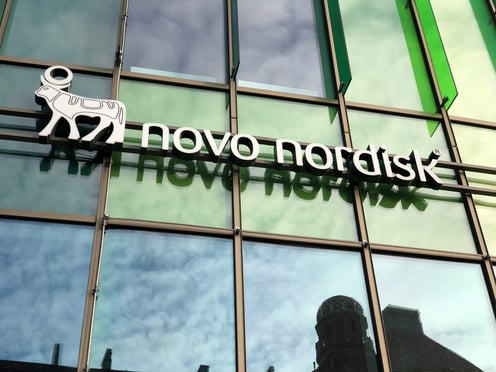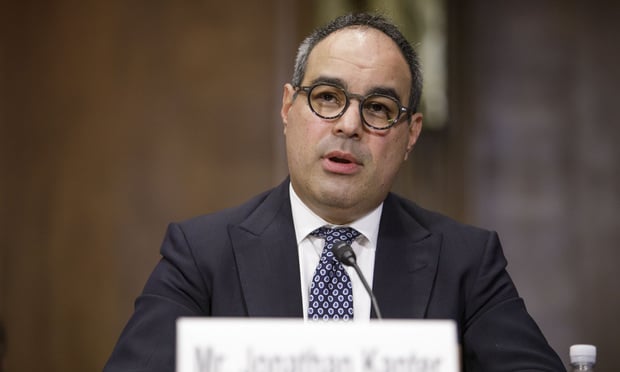 Practice Fusionadmitted to the scheme with an unnamed opioid maker, though thedetails of the government case closely match a public researchpartnership between Practice Fusion and Purdue Pharma. (Photo:Shutterstock)
Practice Fusionadmitted to the scheme with an unnamed opioid maker, though thedetails of the government case closely match a public researchpartnership between Practice Fusion and Purdue Pharma. (Photo:Shutterstock)
(Bloomberg) –To doctors opening patients' electronic records across the U.S., the alertwould have looked innocuous enough.
|A pop-up would appear, asking about a patient's level of pain.Then, a drop-down menu would list treatments ranging from areferral to a pain specialist to a prescription for an opioid painkiller.
|Click a button, and the program would create a treatment plan.From 2016 to spring 2019, the alert went off about 230 milliontimes.
|Related: Opioid maker Insys to pay $225M to settle kickbackallegations
|The tool existed thanks to a secret deal. Its maker, a softwarecompany called Practice Fusion, was paid by a major opioidmanufacturer to design it in an effort to boost prescriptions foraddictive pain pills — even though overdose deaths had almosttripled during the prior 15 years, creating a public-healthdisaster. The software was used by tens of thousands of doctors'offices.
|Its existence was revealed this week thanks to a governmentinvestigation. Practice Fusion agreed to pay $145 million toresolve civil and criminal cases, according to documents filed in aVermont federal court. Practice Fusion admitted to the scheme withan unnamed opioid maker, though the details of the government caseclosely match a public research partnership between Practice Fusionand Purdue Pharma Inc., which makes OxyContin.
|Representatives for Purdue Pharma and the Vermont U.S. attorneydeclined to comment. Health-software company Allscripts HealthcareSolutions Inc., which bought Practice Fusion for $100 million in2018, said in a statement the conduct predated the deal and it has"further strengthened" compliance at Practice Fusion, but didn'tanswer specific questions about the settlement.
|As deaths from opioid overdoses mounted, states and citizensaccused manufacturers in lawsuits of pushing drugs whiledownplaying risks. Many millions of pills were dispensed at painclinics in rural areas, fueling a vigorous street trade.
|The Practice Fusion case shows a more subtle method of reachingdrug consumers. Employees estimated internally that the drugcompany could add almost 3,000 patients and bolster opioid sales byas much as $11.3 million through the partnership. Under thecontract, the drugmaker paid Practice Fusion almost $1 million.
|"The pharmaceutical industry was egregious in advancing andpropelling the access of opioids to a wider and wider population,"said Bertha Madras, a professor at Harvard Medical School whoserved on the President's Commission on Combating Drug Addictionand the Opioid Crisis. She described the Practice Fusionarrangement as "nefarious and subtle."
|Big tech companies have large-scale plans to reinvent healthcare, promising to revolutionize areas such as electronic records,which are a crucial source of data about consumer health. But thePractice Fusion case shows how such plans can be exploited and evenprovide a new avenue for financial interests to influencetreatment.
|Free help
The San Francisco-based company was founded in 2005 and becameknown for its unique model of providing free, ad-supportedhealth-records software to independent doctors. The company saysits cloud-based platform has grown to be used in roughly 30,000practices.
|Groundwork for the deal between the companies began in 2013,according to the statement of facts agreed to by Practice Fusionunder a deferred prosecution agreement. The idea was to get theopioid maker's pain drugs to certain kinds of patients: ones whoweren't taking opioids, or those being prescribed the company'sless profitable products. It also aimed to secure longerprescriptions, according to the court papers.
|The companies also agreed to do a research study. But accordingto an internal Practice Fusion email cited in the court papers, thedrug company considered it "all about marketing."
|Making a warning
While the settlement doesn't name the drugmaker, Reutersreported this week that it was Purdue, citing unnamed sources.Purdue's opioid offerings also matched the profile of drugs citedin court papers.
|Practice Fusion and Purdue researchers publicly announced in a2017 research report that they had begun to study an online toolwith identical features to those described in the court papers. Theresearch tested pain alerts for roughly 13 million patients over ayear.
|Steven Labkoff, the Purdue researcher who presented that studyat a 2017 conference, didn't return calls seeking comment.
|In 2016, the U.S. Centers for Disease Control and Prevention putout new guidelines on opioids and treating patients with chronicpain. The guidelines emphasized non-drug and non-opioidalternatives. When opioids were prescribed, quicker-acting versionswere preferable to the long-acting type, the agency said.
|Both Practice Fusion and the drug company shared thoseguidelines internally but "did not incorporate the recommendationscontained in those guidelines," according to the court papers.
|Practice Fusion reported to the drug company in 2016 that theproject was working as intended, shifting prescriptions to thecompany's extended-release opioids. The arrangement betweenPractice Fusion and the opioid company continued even after alawyer for the drugmaker raised concerns about the substance of theprogram and started a legal review, according to the papers.
|Inevitable manipulation
Jamie Weisman, a dermatologist in the Atlanta area, learned thisweek of Practice Fusion's partnership with the opioid maker. Shehas used its platform for five years, but doesn't recall seeingthat kind of pain alert.
|"It's evil. There's really no other word for it," she said. But,"if you want to model electronic health records as a for-profitsystem and not regulate them as such and force doctors to be onthem, it's almost inevitable that they're going to bemanipulated."
|Electronic medical-record makers have come under increasedscrutiny for their business practices, including by the U.S.Justice Department, as they've grown since the implementation ofthe Affordable Care Act.
|Practice Fusion had similar agreements with makers of otherdrugs. The government claimed in its civil case that PracticeFusion struck 14 such deals with pharmaceutical companies between2013 and 2017.
|Practice Fusion admitted only to the opioid agreement, and"there has been no determination of liability" on civil claims, theJustice Department said in a statement.
|Read more:
- Opioid epidemic cost U.S. $631 billion over thepast 4 years
- The opioid epidemic claims its first corporatevictim
- 5 more states sue Purdue Pharma over opioidmarketing
Copyright 2020 Bloomberg. All rightsreserved. This material may not be published, broadcast, rewritten,or redistributed.
Complete your profile to continue reading and get FREE access to BenefitsPRO, part of your ALM digital membership.
Your access to unlimited BenefitsPRO content isn’t changing.
Once you are an ALM digital member, you’ll receive:
- Critical BenefitsPRO information including cutting edge post-reform success strategies, access to educational webcasts and videos, resources from industry leaders, and informative Newsletters.
- Exclusive discounts on ALM, BenefitsPRO magazine and BenefitsPRO.com events
- Access to other award-winning ALM websites including ThinkAdvisor.com and Law.com
Already have an account? Sign In
© 2024 ALM Global, LLC, All Rights Reserved. Request academic re-use from www.copyright.com. All other uses, submit a request to [email protected]. For more information visit Asset & Logo Licensing.








